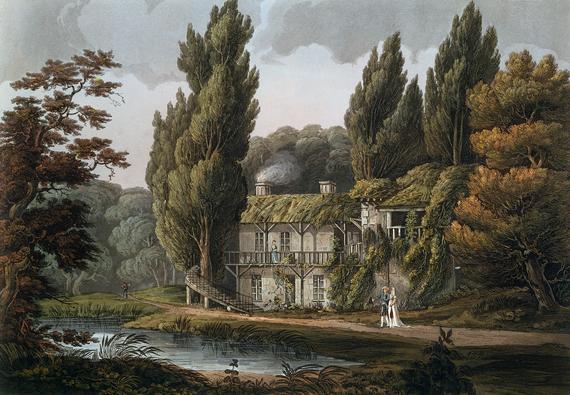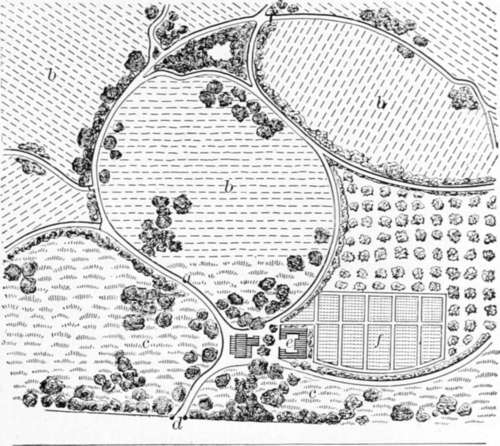 |
| Le Petit Hameau of Marie-Antoinette at Versailles |
The ferme ornée or ornamental farm was a phrase coined by Stephen Switzer who described it thus in his Ichnographia rustica or The Nobleman, Gentleman and Gardener's Recreation (1715): 'By mixing the useful and profitable parts of Gard'ning with the Pleasurable in the Interior Parts of my Designs and Paddocks, obscure enclosures, etc. in the outward, My Designs are thereby vastly enlarg'd and both Profit and Pleasure may be agreeably mix'd together'. Thomas Whateley provides an extended description in his Observations on modern gardening (1770).
Both books is downloadable free (via the links) thanks of our friends at the Biodiversity Heritage Library.
However it took a few years for this ‘alternative’ landscape style to catch on and the original ferme ornée was made by Philip Southcote. In 1732
Southcote, then 35, married the Dowager Duchess of Cleveland, a woman
almost twice his age, and the couple moved to Woburn (or Wooburn) Farm
near Weybridge in Surrey. Because of his Catholic faith he was denied a career in politics or position at at court and so he set himself to landscaping.
 |
| Plan for a ferme ornée from Landscape Gardening by Andrew Jackson Downing |
Rather than acres of sculpted topography, swathes of sward, ornamental clumps of trees and shelterbelts, classical buildings and lakes, Southcote developed the ferme ornée with its pictorial and bucolic scenes. A carefully contrived amalgam of a working farm, flowery walks, and architcecturally-ornamented farm buildings.
 |
| An ornamented farm building |
At Woburn several buildings were of these designed by Southcote's friend, the landscape designer, William Kent about whom I have already posted.
The main element of the design was its serpentine walk which took the guest on a circuit of the landscape. The five foot wide sand path was flanked on either side by a hedgerow that was enriched with a wide range of trees, and a border of shrubs, climbers, and herbaceous species, chosen with particularly emphasis on scent; and arranged by height from smallest in the front to tallest at the back.
 |
| The Path Planting at Woburn (R W King) |
This floral path was carefully threaded through the farmland in a way that presented the bucolic scenery as a succession of pictorial scenes - carefully contrived gaps in the hedgerow framing the desired views and vistas. The artistic impact was made all the more scenic by ornamenting the farmland. For example, buildings such as barns were given crenelated facades, the banks of the excavated serpentine river were carefully mounded, the grass sward was embellished with small groups of shrubs and beds of flowers, and movement and sound were provided by the cattle, sheep, and wildfowl. The ferme ornée never became a big fashion, but was popular amongst a select cognoscente.
Sadly no ferme ornée survive, but as well as at Woburn, examples were made at The Leasowes in Halesowen by William Shenstone; Riching Park (later Percy Lodge) in Buckinghamshire; Apps Court in Surrey, Mickleton in Gloucestershire; White Knights in Berkshire (now the campus of the University of Reading) and Enville in Staffordshire.
Sadly no ferme ornée survive, but as well as at Woburn, examples were made at The Leasowes in Halesowen by William Shenstone; Riching Park (later Percy Lodge) in Buckinghamshire; Apps Court in Surrey, Mickleton in Gloucestershire; White Knights in Berkshire (now the campus of the University of Reading) and Enville in Staffordshire.

No comments:
Post a Comment